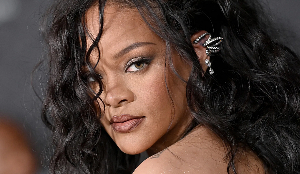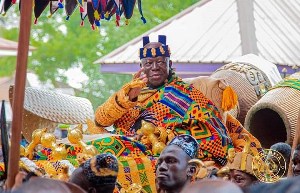- Home - News
- TWI News | TV
- Polls
- Year In Review
- News Archive
- Crime & Punishment
- Politics
- Regional
- Editorial
- Health
- Ghanaians Abroad
- Tabloid
- Africa
- Religion
- Election 2020
- Coronavirus
- News Videos | TV
- Photo Archives
- News Headlines
- Press Release
Business News of Saturday, 18 April 2015
Source: B&FT
Tumbling Cedi; Analysts fear worst yet to come
The first disbursement of the International Monetary Fund (IMF) programme is not a likely antidote to the ailing cedi, which has already taken a 16.1 percent fall since beginning of the year, analysts have cautioned the central bank.
Earlier this week the Bank of Ghana was reported to have received US$114.8million, being the first tranche of the announced US$918million economic support programme from the Washington-based lender.
While government had insisted the first tranche should offer some much-needed balance of payments support, economists at InvestCorp argue that the inflows from the IMF, which average US$306million, are “limited compared to the financing gap of about US$2billion in the 2015 budget, and an expected current account deficit of about US$3-4billion in 2016”.
Just like InvestCorp, most analysts view the cedi’s weakness as a product of macroeconomic instability underlined by high fiscal and current account deficits, which necessitated the country seeking a bailout from the Bretton Woods organisation.
The Accra-based investment advisory firm warned that the local currency is further threatened by government’s debt financing strategy -- which has seen the increasing use of US dollar-denominated debt as a refinancing strategy.
In its March 2015 research and analytics, the firm raised “concerns over Ghana’s public debt mix and the increasing use of US dollar-denominated debt as a refinancing strategy -- which is likely to worsen the outlook for Ghana’s debt sustainability and currency risk over the medium-term”.
The local currency’s 16.1 percent slump as at April 15 compares to 19.5 percent depreciation within the same period last year, by which time the central bank had introduced a raft of measures to stem the rapid decline.
The central bank is yet to publicly announce measures it is pursuing to tame the cedi, and has not responded to queries made by the B&FT on its approach to calming the troubled cedi which has begun to stoke inflation.
Inflation now stands at 16.6 percent in March from 16.5 percent the previous month, and is beginning to add to the central bank’s troubles. The marginal increase in inflation pushes it further adrift of government’s end-year inflation target of 11.5 percent.
IMF proposed escape route
The Fund’s Extended Credit Facility (ECF) worth US$918million granted to Ghana will support a reform programme aimed at boosting growth and help cut poverty by restoring macroeconomic stability through tighter fiscal discipline, strengthened public finances, and slowing inflation.
According to the IMF, lower inflation and interest rates -- combined with a more stable exchange rate, will help support private sector activity. It is also expected that an increase in oil exports and lower oil imports, on the back of domestic gas production, will spur the current account and support reserves over the medium-term.
Slowing momentum
Ghana’s economic growth rate topped 9 percent in 2011, but three difficult years followed that were characterised by slowing activity, accelerating inflation, rising debt levels and financial vulnerabilities.
The country’s economic prospects were put at risk by the emergence of large fiscal and external imbalances, as well as electricity shortages.
Growth decelerated markedly in 2014 to an estimated 4.2 percent, driven by a sharp contraction in the industrial and service sectors. This was largely due to the negative impact of currency depreciation on input costs, declining domestic demand, and increasing power outages.
Inflationary pressures rose on the back of a large depreciation of the cedi and financing the fiscal deficit by the Bank of Ghana. Despite several hikes in policy interest rates in 2014 -- which brought them to 21 percent -- headline inflation reached 17 percent at end-2014, well above the 8 +/- 2 percent official target range.
Entertainment










